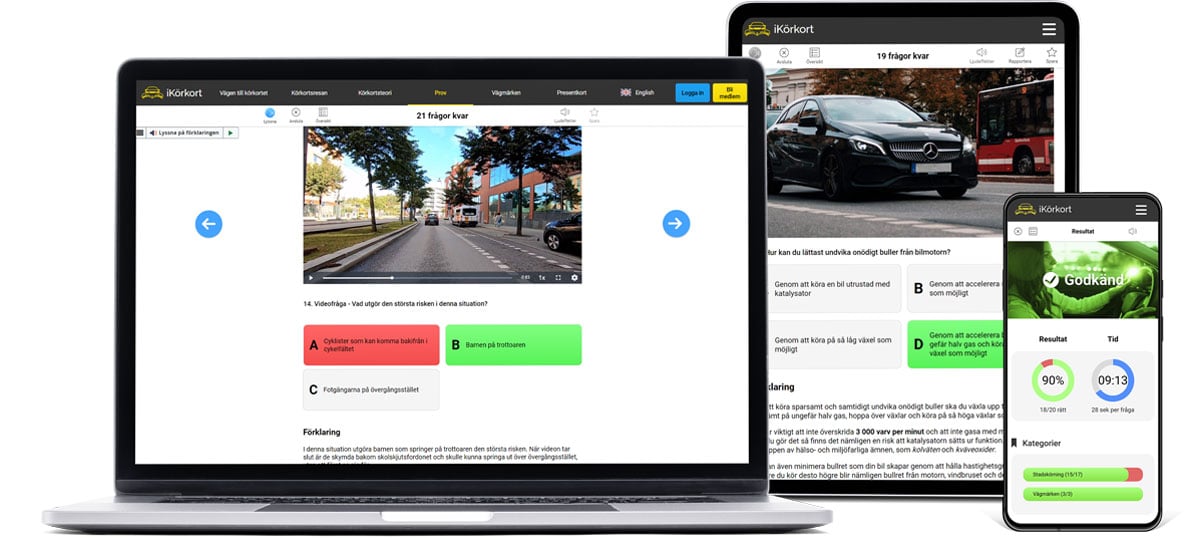 iKörkort
iKörkort
 Tests
Tests

 Language
Language

Aquaplaning occurs when a vehicle's tyres are no longer able to divert surface water from their path. This leads to a layer of water building up in front of and under the tyres, effectively "lifting" them and removing their contact with the road. At this point, you will temporarily lose the ability to steer, brake or accelerate. There is always a risk of aquaplaning when it is raining or when there is water on the road for some other reason.
Three factors essentially determine whether a vehicle will aquaplane when driving through surface water: the vehicle's speed, the amount of water on the road and the tyres' tread and width.
The faster you drive through surface water, the higher the risk of aquaplaning. The same applies to the amount of water on the road: the more water there is, the higher the risk of aquaplaning.
The tyres' tread plays a decisive part in diverting surface water. If the tread depth is poor, the tyres cannot divert enough water. Wide tyres further increase the risk of aquaplaning.



